 GoodSound! "Music" Archives GoodSound! "Music" Archives
January 1, 2009 |
| Jim Boggia: Misadventures in
Stereo
Bluhammock Music BLU80033
Format: CD
| Musical Performance |
     |
| Sound Quality |
     |
| Overall Enjoyment |
     |
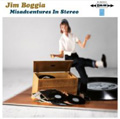 Jim Boggia’s witty liner
notes for his third disc, Misadventures in Stereo, close with a series of
"Questions asked during the making of this record." One of them is "Should
we use a click?" A click track is an electronic metronome that plays in headphones to
keep musicians from wandering off time when they’re recording or playing live, and
some people (I’m one) believe the beginning of cold, manufactured pop music can be
traced to the use of the technique. Boggia’s answer to the question is "God
no." There’s nothing manufactured about Misadventures in Stereo,
which is a stunningly subtle example of pop craftsmanship. Boggia doesn’t hide his
influences -- among them the Beatles, the Beach Boys, and, bless him, Harry Nilsson -- but
he channels them in surprising ways. It’s only about halfway through the beautifully
constructed vocal harmonies of "To and Fro" that his connection to the Move
becomes apparent, while in "Chalk One Up for Albert’s Side," the trumpet
line, and the alarm clock that chimes about two-thirds of the way through the track, evoke
Sgt. Pepper’s Lonely Hearts Club Band without hitting you over the head with
it. Pretty soon you’ll stop trying to figure out where Boggia’s genius is rooted
and just let it wash over you. I can’t resist a guy who slips in a reference to
underappreciated pop genius Emitt Rhodes in "8 Track." Neither should you. . . .
Joseph Taylor Jim Boggia’s witty liner
notes for his third disc, Misadventures in Stereo, close with a series of
"Questions asked during the making of this record." One of them is "Should
we use a click?" A click track is an electronic metronome that plays in headphones to
keep musicians from wandering off time when they’re recording or playing live, and
some people (I’m one) believe the beginning of cold, manufactured pop music can be
traced to the use of the technique. Boggia’s answer to the question is "God
no." There’s nothing manufactured about Misadventures in Stereo,
which is a stunningly subtle example of pop craftsmanship. Boggia doesn’t hide his
influences -- among them the Beatles, the Beach Boys, and, bless him, Harry Nilsson -- but
he channels them in surprising ways. It’s only about halfway through the beautifully
constructed vocal harmonies of "To and Fro" that his connection to the Move
becomes apparent, while in "Chalk One Up for Albert’s Side," the trumpet
line, and the alarm clock that chimes about two-thirds of the way through the track, evoke
Sgt. Pepper’s Lonely Hearts Club Band without hitting you over the head with
it. Pretty soon you’ll stop trying to figure out where Boggia’s genius is rooted
and just let it wash over you. I can’t resist a guy who slips in a reference to
underappreciated pop genius Emitt Rhodes in "8 Track." Neither should you. . . .
Joseph Taylor
|
Neil Young: Sugar Mountain: Live at Canterbury
House
Reprise 516758-2
Format: CD
| Musical Performance |
     |
| Sound Quality |
     |
| Overall Enjoyment |
     |
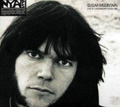 Neil Young was just 22 when he
recorded these live performances in 1968, at Canterbury House, in Ann Arbor, Michigan. The
Buffalo Springfield had just split up, and Young’s first solo album would be released
only a few days later. Young wasn’t yet rock aristocracy, and, as the emcee notes in
his introduction, the club was surprised at how many people came out to hear him. One
track from this gig, "Sugar Mountain," showed up as the B-side of the singles
"The Loner" and "Cinnamon Girl," and on the 3-LP/2-CD retrospective Decade
(1977), but nothing else here has ever been officially released until now. Young sings
tunes he wrote for Buffalo Springfield ("Out of My Mind," "On the Way
Home"), along with a few that would show up on his first LP. He also talks quite a
bit between tunes, some of it hippyish fun, some of it puzzling but likable. In this very
simple two-track recording, Young’s acoustic guitar and voice are mixed center stage,
behind them the reassuring sound of analog tape hiss. Some of these songs sound
drastically different from their full-on rock versions, but lose none of their power in
these stripped-down acoustic performances. . . . Joseph Taylor Neil Young was just 22 when he
recorded these live performances in 1968, at Canterbury House, in Ann Arbor, Michigan. The
Buffalo Springfield had just split up, and Young’s first solo album would be released
only a few days later. Young wasn’t yet rock aristocracy, and, as the emcee notes in
his introduction, the club was surprised at how many people came out to hear him. One
track from this gig, "Sugar Mountain," showed up as the B-side of the singles
"The Loner" and "Cinnamon Girl," and on the 3-LP/2-CD retrospective Decade
(1977), but nothing else here has ever been officially released until now. Young sings
tunes he wrote for Buffalo Springfield ("Out of My Mind," "On the Way
Home"), along with a few that would show up on his first LP. He also talks quite a
bit between tunes, some of it hippyish fun, some of it puzzling but likable. In this very
simple two-track recording, Young’s acoustic guitar and voice are mixed center stage,
behind them the reassuring sound of analog tape hiss. Some of these songs sound
drastically different from their full-on rock versions, but lose none of their power in
these stripped-down acoustic performances. . . . Joseph Taylor
|
Various Artists: Rich Man’s War: New Blues
& Roots Songs of Peace and Protest
RUF 1144
Format: CD
| Musical Performance |
     |
| Sound Quality |
     |
| Overall Enjoyment |
     |
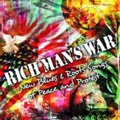 You might not find
anything in the 12 tracks of Rich Man’s War: New Blues & Roots Songs of Peace
and Protest as elegant as "Where Have All the Flowers Gone" or "Last
Night I Had the Strangest Dream," but much here is worth hearing. Some of the songs
-- Michael Hill’s "Fear Itself," the Pat Boyack Band’s "Mr.
Wesola’s Lucky Number Dream Book Part II" -- are smart, but hard to learn and
play. Others are more friendly to the oral tradition: Bob Brozman’s "Follow the
Money," Norman and Nancy Blake’s "Don’t Be Afraid of the
Neo-Cons," Roy Zimmerman’s "Chickenhawk," and Eddy "The
Chief" Clearwater’s gospel tune "A Time for Peace." Wit and
imagination abound. For a collection of such diverse styles and arrangements recorded
independently over five years, these tracks sound not only clear and bright, but give the
impression of having been recorded much closer together in time and space. . . . David
Cantor You might not find
anything in the 12 tracks of Rich Man’s War: New Blues & Roots Songs of Peace
and Protest as elegant as "Where Have All the Flowers Gone" or "Last
Night I Had the Strangest Dream," but much here is worth hearing. Some of the songs
-- Michael Hill’s "Fear Itself," the Pat Boyack Band’s "Mr.
Wesola’s Lucky Number Dream Book Part II" -- are smart, but hard to learn and
play. Others are more friendly to the oral tradition: Bob Brozman’s "Follow the
Money," Norman and Nancy Blake’s "Don’t Be Afraid of the
Neo-Cons," Roy Zimmerman’s "Chickenhawk," and Eddy "The
Chief" Clearwater’s gospel tune "A Time for Peace." Wit and
imagination abound. For a collection of such diverse styles and arrangements recorded
independently over five years, these tracks sound not only clear and bright, but give the
impression of having been recorded much closer together in time and space. . . . David
Cantor
|
The Columbia Is Lost: St. Anthony’s Fire
www.thecolumbiaislost.co.uk
Format: CD
| Musical Performance |
     |
| Sound Quality |
     |
| Overall Enjoyment |
     |
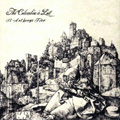 The Columbia Is Lost, aka wunderkind Paul Ash, released St.
Anthony’s Fire in October 2008. It’s the first full-length album from Ash,
who wrote, performed, recorded, and produced it all, using "any instrument I could
get my hands on" -- which turns out to be an impressively varied selection. From
electric bass, guitar, and keyboard to cello, trumpet, clarinet, charango, and a
269-year-old violin, the blend is ornately orchestral and harmonic. Some tracks are
entirely instrumental, such as the grinding, electrified takeoff track, "Light the
Blue Touch Paper," and the Middle Eastern-influenced "Auto De Fe," which
conjures up images of desert caravans. Those that incorporate lyrics do so with subtle
chants, samples of tele convos, and softly spoken, dream-like poems. Each song seems to
progress from calm to confusion to chaos and back to calm, giving the listener the feeling
that an emotional voyage has been made. You may have to go to MySpace, or The Columbia Is
Lost website, to order this disc; an unsigned artist, Ash distributes his music himself,
and will gladly ship you an album directly from West Sussex, England. He’ll also
likely include a brief personal note thanking you for your support. Much like the effect
of the poisonous ergot fungus alluded to in the album’s title, St. Anthony’s
Fire is utterly bewitching. . . . Shannon Holliday The Columbia Is Lost, aka wunderkind Paul Ash, released St.
Anthony’s Fire in October 2008. It’s the first full-length album from Ash,
who wrote, performed, recorded, and produced it all, using "any instrument I could
get my hands on" -- which turns out to be an impressively varied selection. From
electric bass, guitar, and keyboard to cello, trumpet, clarinet, charango, and a
269-year-old violin, the blend is ornately orchestral and harmonic. Some tracks are
entirely instrumental, such as the grinding, electrified takeoff track, "Light the
Blue Touch Paper," and the Middle Eastern-influenced "Auto De Fe," which
conjures up images of desert caravans. Those that incorporate lyrics do so with subtle
chants, samples of tele convos, and softly spoken, dream-like poems. Each song seems to
progress from calm to confusion to chaos and back to calm, giving the listener the feeling
that an emotional voyage has been made. You may have to go to MySpace, or The Columbia Is
Lost website, to order this disc; an unsigned artist, Ash distributes his music himself,
and will gladly ship you an album directly from West Sussex, England. He’ll also
likely include a brief personal note thanking you for your support. Much like the effect
of the poisonous ergot fungus alluded to in the album’s title, St. Anthony’s
Fire is utterly bewitching. . . . Shannon Holliday |
Artie Shaw: The Last Recordings, Volume 1
Nimbus NI 2709/10
Format: CD
| Musical Performance |
     |
| Sound Quality |
     |
| Overall Enjoyment |
     |
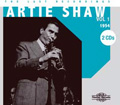 Artie Shaw was one of the geniuses of swing, a popular musician
who constantly challenged himself and then, in 1954, when he felt he’d said
everything he could on the clarinet, quit playing altogether. This two-CD set includes
three of Shaw’s final small-group recordings from 1954 -- sextet and quintet sessions
that include Hank Jones on piano. Shaw is in strong form, elegant and fiery, with a clean,
burnished tone and an easy, unforced flow of beautiful melodic ideas. The tunes are
standards Shaw and his fans knew well, such as "Besame Mucho" and "Someone
to Watch Over Me," but the leader never coasts or falls back on clichés. Tal Farlow,
the guitarist on the first two sessions, contributes some of his best playing in
beautifully restrained lines. Those sessions also feature Joe Roland on vibes, whose solos
are as detailed and precise as Shaw’s. The clarinetist has high praise for Hank Jones
in the liner notes, and the pianist earned it. He plays brilliantly throughout, and his
solos are tasteful and intelligently paced. These sessions were recorded in mono, and
while I occasionally wished for a bit more clarity in the sound, they’re nonetheless
enjoyable. The recordings, originally released on Verve, were reissued in 1992 on
MusicMasters, and are now again available through the British label Nimbus. . . . Joseph
Taylor Artie Shaw was one of the geniuses of swing, a popular musician
who constantly challenged himself and then, in 1954, when he felt he’d said
everything he could on the clarinet, quit playing altogether. This two-CD set includes
three of Shaw’s final small-group recordings from 1954 -- sextet and quintet sessions
that include Hank Jones on piano. Shaw is in strong form, elegant and fiery, with a clean,
burnished tone and an easy, unforced flow of beautiful melodic ideas. The tunes are
standards Shaw and his fans knew well, such as "Besame Mucho" and "Someone
to Watch Over Me," but the leader never coasts or falls back on clichés. Tal Farlow,
the guitarist on the first two sessions, contributes some of his best playing in
beautifully restrained lines. Those sessions also feature Joe Roland on vibes, whose solos
are as detailed and precise as Shaw’s. The clarinetist has high praise for Hank Jones
in the liner notes, and the pianist earned it. He plays brilliantly throughout, and his
solos are tasteful and intelligently paced. These sessions were recorded in mono, and
while I occasionally wished for a bit more clarity in the sound, they’re nonetheless
enjoyable. The recordings, originally released on Verve, were reissued in 1992 on
MusicMasters, and are now again available through the British label Nimbus. . . . Joseph
Taylor |
|
 All Contents
Copyright © 2009 All Contents
Copyright © 2009
Schneider Publishing Inc., All Rights Reserved.
Any reproduction of content on
this site without permission is strictly forbidden.
|
|